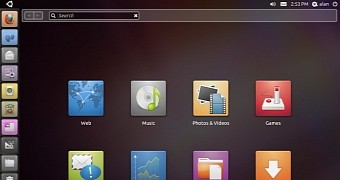Canonical devs and the Ubuntu community have a good reason to celebrate these days because the Unity desktop environment is now four years old.
Unity is the default desktop environment in Ubuntu and it's been around for four years now, although not for the desktop version of the distribution. It was first used in Ubuntu Netbook Remix, which was a flavor dedicated for Netbook use. In fact, Ubuntu Netbook Remix 10.10 Maverick Meerkat was the first to adopt the new Unity desktop.
The regular Ubuntu 10.10 release still used GNOME 2.x for the desktop, which is one of the reasons why some users still say that 10.10 is the best version ever made by Canonical.
Unity was the replacement nobody wanted
Canonical decided to replace the GNOME 2.x desktop environment with its own software, but the design was completely alien for the user base. Some liked it, but many people didn't and it's still mentioned from time to time by various users as they moment they gave up on Ubuntu.
Unity was different from GNOME from a design point of view, but the Ubuntu developers didn't replace all the packages from GNOME and they kept a lot of them (they still do). The former Ubuntu fans who didn't like Unity's direction must have been really disappointed when GNOME 2.x was abandoned soon after and replaced with a completely different GNOME 3.0, which sparked the same kind of debate.
Why Unity replaced GNOME
Back in the days of Ubuntu 10.10, the Canonical and GNOME teams used to work very closely together, but things changed as Ubuntu became more and more popular. One of the reasons that compelled Canonical to build Unity was the fact that the GNOME devs' vision didn't align with theirs anymore.
Users were complaining about problems with GNOME or they wanted certain features. Some of the patches sent upstream by Ubuntu devs for GNOM, were not accepted or it took a very long time for them to be implemented. In the meantime, Canonical and Ubuntu took a lot of flak for problems that couldn't be corrected by them, but many users didn't know that.
So, the need for a new desktop environment that was not bound so tightly to GNOME's future became very clear. Unity eventually landed in the desktop flavor of Ubuntu 11.10. So, the official launch was October 10, 2010, which makes Unity four years old.
Unity is still not embraced by the entire community, although many users now accept the fact that it's a very useful and productive environment. It gains more supporters with each new release and it's here to stay, although a big overhaul of the entire desktop is long overdue and is bound to land in the next year or two.

 14 DAY TRIAL //
14 DAY TRIAL //